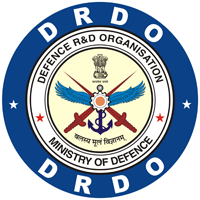Antifungal Potential of Seabuckthorn (Hippophae Rhamnoides L.) Against Rhizopus Azygosporus
An in-silico Approach to Combat Mucormycosis
DOI:
https://doi.org/10.14429/dlsj.21423Keywords:
Antifungal, Ergosterol, Mucormycosis, Rhizopus, SeabuckthornAbstract
Rhizopus species are opportunistic fungal pathogens from the Mucorales order, commonly found in soil, decaying organic matter, and indoor environments. While generally harmless, they can cause life-threatening infections in immunocompromised individuals, leading to mucormycosis. During the COVID-19 pandemic, mucormycosis cases surged, particularly in India, due to immune suppression caused by diabetes (present in
66.1 % of cases) and widespread corticosteroid use (80.3 % of cases). Standard treatments include antifungal agents like Amphotericin B, Posaconazole, and Isavuconazole, along with surgical debridement. Mucorales exhibit resistance to many antifungals due to their unique cell wall composition, making azoles like itraconazole and voriconazole ineffective, while echinocandins show minimal activity. Seabuckthorn (Hippophae rhamnoides L. ), rich in bioactive compounds, exhibits antioxidant, anti-inflammatory, and antimicrobial properties, making it a promising candidate against Rhizopus infections. This study employs molecular docking using iGEM Dock to evaluate the binding affinity of Seabuckthorn bioactive compounds against ergosterol biosynthesis in Rhizopus azygosporus, a major causative agent of mucormycosis. ADMET analysis is performed to assess the pharmacokinetic profiles of the compounds, ensuring their suitability for therapeutic applications. The present study identifies futuristic novel drug targets and efficient antifungal agents to effectively address mucormycosis.
Downloads
Published
How to Cite
Issue
Section
License
Copyright (c) 2025 Defence Scientific Information & Documentation Centre (DESIDOC)where otherwise noted, the Articles on this site are licensed under Creative Commons License: CC Attribution-Noncommercial-No Derivative Works 2.5 India

